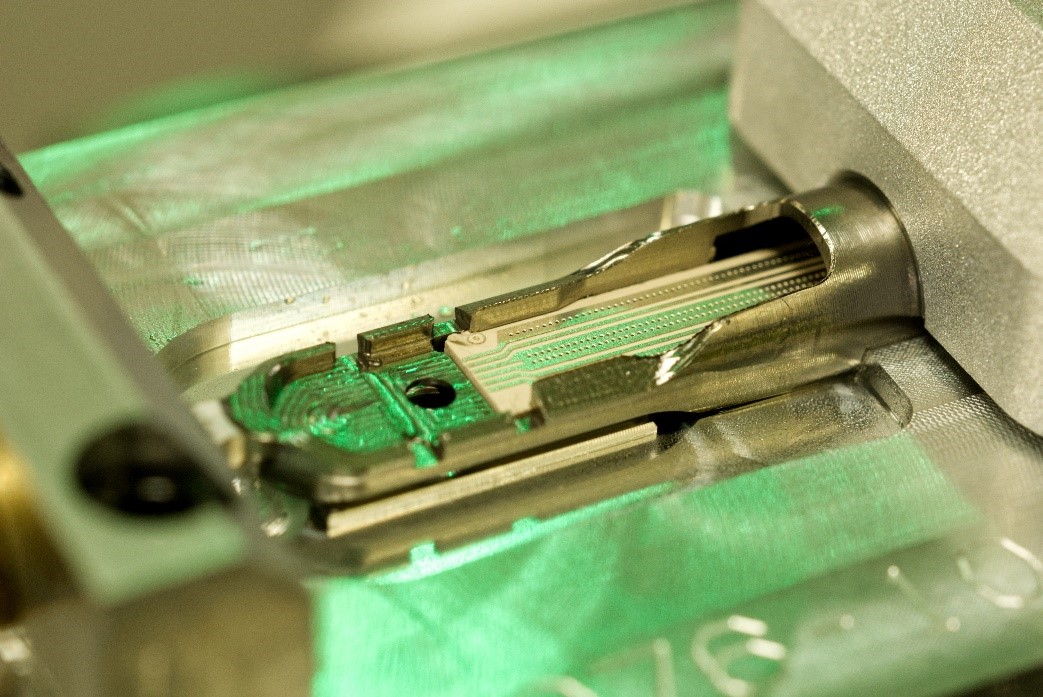Development of TEM supports for injecting radio-frequency signals
September 18, 2024
In collaboration with CISTEME and A3D Design, CEMES has developed and produced two new object holders for the in situ injection of high-frequency electrical signals. The measurements carried out show that a bandwidth of several GHz is now accessible. These novel instruments for MET will enable dynamic studies of electrically excited systems with sub-nanosecond time resolution.
For several years, CEMES laboratory has been developing in situ studies of nanosystems using transmission electron microscopy (TEM) . Part of this work aims at performing electron holography experiments in order to quantitatively map the electric and magnetic fields of electrically excited nanosystems and nanodevices with a sub-nanometric resolution.
However, the results obtained to date are based on static studies and do not allow access to dynamic processes. In particular, CEMES has long been seeking to develop a new method for imaging radiofrequency (RF) electromagnetic waves in magnetic nanomaterials (spin waves) using TEM. One of the challenges is to inject signals of several GHz in situ or pulsed signals of less than 1 ns through dedicated object carriers to the nanostructure, or to nearby antennas. The limited bandwidth of commercially available carriers greatly reduces the injected power and considerably increases the width of the electrical pulses.
In collaboration with CISTEME (a company specialising in the study of RF signals) and A3D Design (a company specialising in precision mechanical engineering), two CEMES researchers and members of the department of mechanics have designed and manufactured two sample holders, one with 2 RF lines and the other with 4, each with a bandwidth of 5 GHz with less than 3 dB loss and up to 18 GHz with less than 10 dB loss over the whole frequency range.
Compatible with the I2TEM microscope dedicated to electron interferometry and in situ experiments, and the HC-IUMi microscope currently under development for time-resolved studies, these new TEM holders will soon make it possible to study spin waves and many other dynamic phenomena in situ, such as the trapping of charges during the charge/discharge cycles of a nanocapacitor or the mapping of magnetic vortex precession trajectories.
This unique development was funded under the EUR NanoX (SWIME), ANR PRC (EHIS 21-CE42-003) and PEPR SPIN (Spin Charac) projects. A patent application is currently under consideration.
 Radiofrequency TEM holders and measurement of loss in dB as a function of the frequency
Radiofrequency TEM holders and measurement of loss in dB as a function of the frequency
Contacts:
Christophe Gatel | christophe.gatel[at]cemes.fr
Nicolas Biziere | nicolas.biziere[at]cemes.fr

